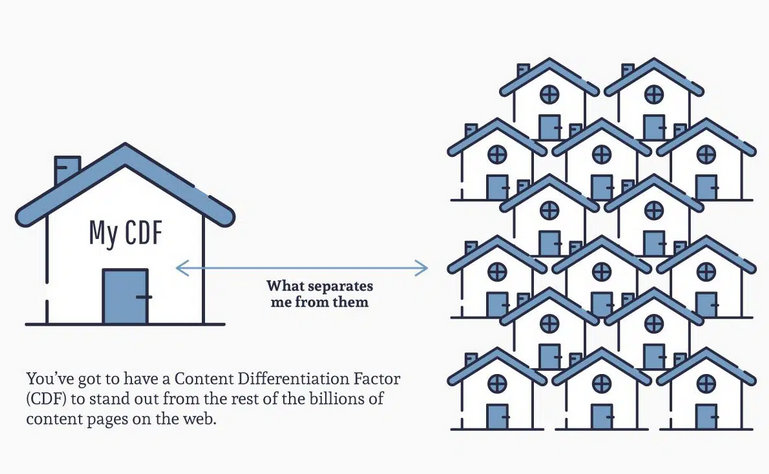The Brand Building Framework You Need to Boost Your Presence
If you strive to establish a remarkable presence in the arts, it's time to develop a well-crafted brand-building framework!
Why?
It helps create a distinct brand identity while ensuring long-term growth and sustainability.
77% of B2B marketing leaders confirm how using a brand-building framework as an asset can boost consistency, extend credibility with prospects, and increase revenue by 10-20%!
Plus, a comprehensive brand marketing strategy defining your unique company's mission, role, and values will ease the process of devising a content creation pattern aligned with your goals, audience expectations, and target market.
So, where do you start?
Today’s guide will equip you with four key steps to ideating a successful brand-building framework.
From discovering the importance of brand positioning to analyzing four fundamental queries to stand out in your niche, you’ll set the basis for a powerful content plan that captivates your target audience and leverages the brand's success.
Let’s jump right in!
The Four-Step Brand Building Framework - Table of Contents
The Importance of Brand Building
Four Key Questions for Content Strategy Foundation
Defining Your Content Differentiation Factor (CDF)
The Importance of Brand Building
Brand building is a vital aspect of content marketing.
It involves creating a cohesive brand, with unique traits and values, that speaks to the audience - leading to quality relationships, lasting customer loyalty and retention, extended trust, and high sales.
Most importantly, it represents the baseline for business longevity.
That’s why you should invest in a robust brand building structure from the get-go.
What’s more, by incorporating the following pillars into your framework…
Purpose - defining your organization's mission and vision
Consistency - maintaining a cohesive identity across all marketing channels and touchpoints
Emotional connection - resonating with customers on a personal level
Flexibility - adapting to market changes while staying true to your core values
Competitive analysis - understanding where your competitors stand in your niche to identify gaps to fill with your brand presence
Employee involvement - engaging your team in shaping and promoting the brand
Loyalty programs - rewarding your loyal customers and community for their support
…You’ll create a consistent brand experience that’s impactful and memorable to your ideal audience!
With this in mind, let's explore the four key questions for content strategy foundation to boost your digital influence and audience engagement.
Four Key Questions for Content Strategy Foundation
To lay the foundation for a strong content strategy within your brand building framework, ask yourself the following questions.
1. Who Are You Helping?
Understanding your audience is the cornerstone of a stellar brand strategy.
It's not just about finding out who they are (aka their demographics) but also defining their preferences and pain points.
This knowledge will make your brand messaging and content more resonating and authentic to your audience.
Plus, it’ll shed light on the most effective content strategies to reach and bond with them.
Identifying Your Audience
The first step towards a top-notch branding framework is identifying who exactly makes up your potential customers.
What’s their behavior? What are they seeking?
Thorough audience research will get insights into their personality, interests, and challenges - allowing you to create personalized experiences that meet their burning needs.
Determining Their Problems
The best method to stand out as a brand is by offering something different and extremely valuable (high-quality products/services, excellent customer support, attractive price points, etc.) to your audience.
Evaluate what matters most to them and adjust your marketing efforts accordingly to address their wants/desires with transformative solutions.
Inspiring Action Through Content Marketing
Remember: to positively impact your audience, strategic brand management must go beyond mere product or service promotion.
It requires inspiring action among existing customers while attracting new ones too.
And there’s no better way to do so than delivering consistent, helpful content that empathizes with your prospects - all infused with specific, catchy CTAs to move them forward in their marketing journey.
The basic life cycle chart ideated by Julia McCoy. (CMI)
This way, you’ll nurture meaningful relationships built on trust and commitment.
2. How Do You Outperform Competitors?
Another aspect of a successful brand strategy framework is offering value to your audience in ways others cannot.
Ask yourself: How can I help my audience better than my competition?
Think about your area of expertise to highlight distinct advantages that may appeal to your target audience based on their struggles (What’s your unique perspective on the matter? What practical solutions do you bring to the table?).
The sweet spot is the intersection of your unique knowledge or skill area and a defined customer pain point. (CMI)
Also, study your competitors’ activity - and content! - to define your brand personality and the best approach to introduce your offerings to your leads.
This self-analysis will help you distinguish yourself from the crowd, leveraging your presence memorably and authoritatively!
3. How Do You Create Resonating Content?
Brand building isn't just about having an attractive logo or catchy tagline.
It goes much deeper into your core values, mission statement, and the way you interact with your audience through your content.
Use audience research to evaluate what content formats engage them the most; start conversations to tune into their expectations and weave compelling narratives around your activity and story to build resonance.
With storytelling, you’ll educate, inspire, and evoke emotional responses - driving tighter connections with your people!
A few more tips:
Develop a consistent brand voice reflecting your identity and appealing to your audience's emotions.
Customize your brand messaging to reach different segments of your target audience.
Adopt various marketing channels to amplify the exposure and reinforce brand recognition.
These components will work together in harmony to create a solid content-creation foundation that speaks to current and potential customers.
4. Why Do You Create Content?
The purpose (your WHY) behind creating content should always align with the overarching goals of your business strategies - whether it's increasing brand awareness, maximizing engagement, or driving sales conversions.
In her book Everybody Writes, Ann Handley points this out with the “So what-because” rule of content creation.
Not losing sight of the big picture when writing content is paramount to determining the inner value of your content idea and how your message serves your audience (why should they care?).
Once you establish clear objectives for each content piece produced, you’ll be able to…
Measure the effectiveness of your marketing initiatives
Make data-driven decisions on how best to allocate resources
Strengthen your communication strategy
…And contribute to the overall brand’s mission achievement!
Defining Your Content Differentiation Factor (CDF)
Answering these four queries will take you to the next step: outline your Content Differentiation Factor (CDF) or that “it factor” that sets you apart.
By developing creative solutions to the challenges and opportunities of the art market, you’ll find your distinctive place in a crowded landscape.
The CDF indicates how you and your content are different from your competitors. (BrandWell)
Which implies:
Catering your values with the audience: Identifying your key principles and ensuring their compatibility with the people you aim to reach will let you set a robust branding plan revolving around your prospects’ needs.
Building genuine relationships: With your authentic, customer-centric writing, you’ll foster brand loyalty and advocacy.
The more aligned these aspects are to what matters most to your audience, the stronger the bond will be with your business - and content!
Lay Your Content Strategy Foundation With This Brand Building Framework
Creating a profitable brand requires careful planning and execution. No doubt.
However, the four-step brand building framework described above will ease the whole process by a long way!
It’ll serve as the base for:
Setting a consistent message, identity, and role for your business.
Defining who exactly demands what only YOU offer.
Devising a results-driven content marketing strategy that engages, fulfills, and retains your audience.
Optimizing all future marketing efforts and branding initiatives.
Best of all, with it, you’ll unleash your potential for business prosperity and long-term success! 🏆








